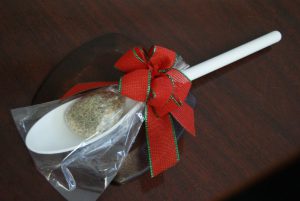by jbreslawski | Feb 24, 2017
 Nationally, America Saves Week is an annual opportunity to promote good personal savings behavior!
Nationally, America Saves Week is an annual opportunity to promote good personal savings behavior!
More locally, the University of Florida Institute of Food and Agricultural Sciences (UF/IFAS) is collaborating with America Saves in a campaign to help Floridians build wealth, not debt! The Florida Saves, (floridasaves.org) statewide initiative has been officially endorsed by Jeff Atwater chief financial officer for the state of Florida. Why? Because research shows that, too many households with an unexpected expense of just $400 could be thrown into a financial crisis! This means a clog in the sink or a broken freezer could easily send a family into debt.
During Florida Saves Week, February 27 to March 4, 2017 UF/IFAS is urging residents to pledge to set a goal and start saving! Like our Florida Saves Facebook page to keep up with the latest info.
Saving money for an emergency makes good sense. Families with money saved for an emergency are less likely to face financial stress, less likely to fall behind on their bills, and less likely to deal with subprime alternative money sources that have higher costs than conventional options.
Make a commitment to yourself and take the Florida Saves pledge to help you reach your savings and debt reduction goals. Additionally, Florida Saves will motivate you with periodic information, advice, tips and reminders sent by email or text message to help you reach your savings goal. Paying yourself first, saving your tax refund, and saving automatically are just a few ways that Florida Saves encourages you to build wealth and reduce debt.
Plus, this year Floridians who pledge to become a saver can enter to win $50 to be put toward reaching their financial goals by completing a short survey after setting a goal and signing the Florida Saves pledge.
Want to win more? Take a video or photo to share your savings story and follow the link to enter to win a national prize of $1,000 in theAmerica Saves http://www.americasavesweek.org/imsavingfor/ contest.
Take the pledge at floridasaves.org Set a goal and make a plan!
by Marjorie Moore | Nov 25, 2016
I don’t know about you but to me it seems we just finished shopping for the holidays and they are here once again. Holiday shopping can be a whirlwind and we forget to take time to stop and think about how much we have spent until the bills arrive. Having a budget for the holidays can be your best defense to not overdoing it this holiday season.
If you plan for the holidays, it can save lots of time, energy, and of course, money. It is important to prepare a budget, make the budget realistic and base it on your cash flow and financial obligations. Once your budget has been created, stick to it!
The next step – make a list of gifts you want to give. When shopping, use cash whenever you can as this helps you watch how much you are spending. When you have reached your budget limit, your shopping should be done! If possible, do not use credit cards to buy gifts. If you use credit cards, keep track of the amounts and stop when you have reached your budget limit.
Gift cards appear to be great but be aware of fees or usage terms that can reduce the value of the gift. Before buying gift cards, ask if the card can be used for online purchases. This may not affect most retailers but some online retailers do not allow using gift cards.
If you want to stretch your budget, you don’t have to purchase all of your gifts. Try making gifts such as food or give a coupon book volunteering your services (i.e. babysitting or yard work). Below is a mix ranch dressing recipe you can give to family and friends this holiday season.
To help with your shopping next year make your list early, then spread your shopping throughout the year.
Use these tips to help you enjoy your holiday.
Spoonful Mix for Ranch Dressing
2 tsp. dried parsley flakes
1 tsp. salt free herb seasoning blend
½ tsp. garlic powder
¼ tsp. dried basil leaves
- Mix all ingredients in small bowl.
- Place mix in to plastic wrap and attach to spoon.
- Decorate spoon with a pretty bow.
Ranch Dressing
Remove decorative wrappings from spoon, leaving the mix inside the plastic wrap and still attached to spoon.
- Empty ½ cup low-fat mayonnaise and ½ cup low-fat buttermilk into a medium bowl.
- Hold spoon over bowl and cut open bag of mix, allowing mix to fall into bowl onto mayo and buttermilk.
- Mix until very well blended (use gift spoon to mix). Refrigerate 30 minutes up to 8 hours to blend flavors.
For more information on holiday shopping, contact your local Extension office.

by Marie Arick | Nov 17, 2016

The holidays are fast approaching! Pause long enough to avoid the pitfalls of overspending. Budgets are always tight during holidays. Gifts are not about the cost, rather they are a display of the true relationship of the people involved.
Gift giving at its finest is a true art form. I have a dear friend who really captures the essence of each person with each gift she gives. Gifting is a statement that demonstrates how important the receiver is and how they are perceived in the giver’s eyes.
Always consider the occasion and the relationship with the receiver. It is also important to know the receiver’s culture as to be certain not to offend. A gift given as an afterthought usually displays just that – it was not originally intended to be given. This is not generally the intention of the giver but can give this impression. Additionally, if you intend to re-gift an item, be certain the item meets the personality of the receiver. Re-gifted items tend to be unusual or offbeat, so think hard before taking this path.
Consider practical, useful gifts that match the person you are shopping for. The idea of gifting a need, a want, a clothing item, and a literature item to a person has been one of the most recent trends. Very few people buy that many gifts for those outside of their immediate family. But, this could be applied to others by just taking one of the options. If they are a reader, consider a gift card to a local bookstore instead of a specific title. This provides the option of an e-book or print version. Or, clothing could come in the form of a nice scarf or other accessory that is a part of their usual style.
A gift is a statement of caring. For each person, this is different. Take the time to consider personality, hobbies, interests, and activities. Choose a gift that matches one or more of these considerations. This lends to the true purpose of gifting – to show the receiver how much they mean to you.

by Angela Hinkle | Sep 28, 2016
 I did it! Or should I say, I didn’t do it! Or more realistically, I almost didn’t do it! What? Spend money in the month of September. Some of you may remember my wallet really needed a break, so I set a goal to spend no money in the month of September unless absolutely necessary.
I did it! Or should I say, I didn’t do it! Or more realistically, I almost didn’t do it! What? Spend money in the month of September. Some of you may remember my wallet really needed a break, so I set a goal to spend no money in the month of September unless absolutely necessary.
Did this help? Yes, my wallet, checking account, and credit cards seem much more at peace. Was it easy? Except for a few bumps and hiccups, it wasn’t too bad. Like a good financial citizen, I paid all by bills and gave at church, I kept gas in my car, and had plenty of food (in my house).
However…
Snafu #1: The food thing was a little trickier when it came to work. I went to a conference and for five days, we only received one dinner, one lunch, and two breakfasts. The people from Idaho brought and gave out great potato chips (but I could not and should not try to live off of those). I brought lots of nuts, granola bars, and small containers of fruit in my suitcase but still had to fork out money for three dinners and one lunch with a little more substance. My traveling companion knew of the goal I had set and was nice enough to buy me dinner one night. (I think I must have looked really sad and hungry.)
Snafu #2: When did September become the season of giving? A wedding and a baby shower brought out the checkbook. Oh well, there are a new bride and mom-to-be who are happy.
At home, the only food I had to buy was bread (yes, I could have frozen some – yuck, or made some – no time) and milk (yes, I could have used the dry milk – yuck to drink) and since I miscalculated the amount of dog food in the house, I had to buy some of that, too. I will give a big shout out for canned and frozen foods. It was no big deal to not go out to eat nor go to the movies or to other forms of entertainment. (The good stuff doesn’t usually come out until October anyway.)
What about my all-important trips to the nail salon? Ha! I found a gift certificate (I love those things) that took care of both trips to the salon.
Though I didn’t go hard-core all the way, I did really well. I feel so much better and I’ve veered off my path toward debtor’s prison (yes, exaggeration).
I am blessed to have a comfortable life so this was not that difficult. One month without extra spending was a free gift I gave myself. See if giving yourself the gift of a no-spend month makes your life better. Then be sure to share your success stories.

by Angela Hinkle | Sep 7, 2016
The month of August has been a financially painful time for me. I blame this on the fact that my only child has just begun her first year at college. Lots (and I mean a whole lot) of spending happened in preparation for this auspicious endeavor.
- Ouch – I began to question if I was spending more than I was making. (This was brought on by reading Building a Spending Plan: All Six Steps, a UF/IFAS EDIS publication.) Actually a very helpful financial read. Check it out: http://edis.ifas.ufl.edu/pdffiles/HE/HE82700.pdf
- Ouch – My credit card bills in the last few months have been quite hefty.
- OUCH – The college bills for housing and tuition came due.
What to do to help alleviate some of the pain caused by this financial stress? I remember reading about “no-spend” months. People often pick February because it has the fewest number of days. But I feel the need for immediate action – and so September it is.
A no-spend month means you don’t spend money on anything except the absolute necessities. I have to pay the mortgage, the car payment, utilities, and I have to get may nails done (yes, that is, in fact, a necessity for me). But no buying clothes or shoes, going out to eat, going to the movies, buying gum or an emergency caffeinated drink. Since there is no child in my house now, I think I may actually be able to do this.
Researchers say if we tell others about our goal, we are more likely to work hard to achieve it. So I told the participants in a health class I was teaching about this goal of mine. One very sweet, gentle, older woman said, “Honey, you know you can’t do that.” My somewhat deflated response was, “Why?” Her kind answer – “You know you’re going to send that child care packages.” Right she was.
However, undeterred, quite determined actually, I have found ways to plan around such obstacles. I sent a care package to the child at the end of August and will send the next one at the beginning of October. I will eat out of the fully stocked freezer and pantry to avoid trips to the store. I will start September with an already full tank of gas. I will watch TV at home. I will do this!
Once October rolls around, check back in and I’ll let you know how I did. Wish me luck!
 Nationally, America Saves Week is an annual opportunity to promote good personal savings behavior!
Nationally, America Saves Week is an annual opportunity to promote good personal savings behavior!





